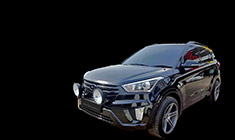News
Renault Kiger RXZ 1.0 Turbo CVT: Initial impressions
I found the Kiger to be a very competent car with a smooth CVT transmission, a capable engine and great looks.
BHPian s_gams recently shared this with other enthusiasts.
Hello BHPians. This is my first post on TeamBHP although I have been a follower of the forum for many years and have particularly been an ardent fan for the last year or so while I was in the process of finalizing a car for me. I do not find myself as knowledgeable as the members of this group and that was the primary reason for not posting anything, however I gathered a courage to write now simply because I do not see any ownership reviews for Kiger even after a year of its launch. I hope my review below will add some value to the group, and will be of some help to anyone who is considering to buy Renault Kiger. Please bear with me for any newbie mistakes.
Requirements
Distance - We are a family of four : 2 adults, one teenager and one soon to be teenager. So I was looking for a family car to own for at least next 5 years or more. My regular running would be around 1000 KM per month, couple of trips of around 500 KM in a year and an annual long trip of around 1500 KM. So overall between 10000 to 15000 KM per year depending upon the work from home status. The daily running would be in city and the long trips would be mostly on highways in addition to one or two treks every month on rural roads of varying conditions.
Fuel – I was looking for a petrol car considering the distances and the engine refinements / NVH offered by a petrol car. I was not ready for an electric car yet considering the state of infrastructure that we have as of now.
Category – I had been an user of Wagon R for around 6 years. Then I owned a Citroen C4 for almost a year while I was abroad. When I came back to India in 2018, I purchased a pre-owned Hyundai i10 as a temporary option since I was expected to shuttle between different countries for couple of years and didn’t want any new car to sit idle at home for longer durations. The i10 was also supposed to be as an option for my wife to get used to driving before we went for a bigger new car. When I moved back to India fully, I started looking for a car in the first quarter of 2020 but then the world got into the Covid era and the lockdowns plus working from home meant that there was no immediate need to change the car.
However, in early 2021 when things started to get back to new normal, I started to look for the options again and by then, I had made up my mind for a sub-compact SUV due to multiple reasons namely – my Citroen C4 driving experience, the multiple and exciting options that were coming up in that segment, aspirational element, the high ground clearance which would be handy for my weekend treks, ease of parking as compared to SUVs etc. My budget could accommodate only sub-compact SUVs so any SUVs or compact SUVs were out of consideration. Further, the big size of SUVs was having an intimidating effect on my wife whereas compact SUVs were less frightening. Less than 4 meter length category seemed optimal from parking and handling point of view as well. So sub-compact SUV it was in terms of category.
Budget – My budget was 12 lakhs and it was non-stretchable. Assuming the i10 would sell for around 2 lakhs, I had planned to spend 10 lakhs. With every one lakh addition, a new category or a new option would open up leading to a different set of parameters for comparison hence this was my starting point in the selection process for short listing or elimination.
Transmission – Although I love to remain connected with my car and the driving through gears, I decided to go for an automatic transmission considering the nasty traffic in Pune. My wife would also be driving it occasionally and she is not at all comfortable with gears. Further, my son would be 18 later this year and would drive the car at some point. Although I would love my son to learn driving with a manual transmission car, I would not like him to suffer on a day-to-day basis in Pune traffic with gears. He would eventually choose what he likes. Hence we decided to go for auto transmission.
Once I decided to for an Automatic, I started reading about various types of auto transmissions and started leaning towards CVT for multiple reasons. I would not go into all the details here however, my mechanical and automobile engineering academic background helped quite a lot here in making some decisions.
Engine – With an interest and working background in IC engines, this was the area that I was quite happy to explore about. Unfortunately, there were not many 4 cylinder options in the category that I was looking at but most of the reputed manufacturers had quite refined engines with 3 cylinders as well. So I turned to the engine power and had a figure of around 100 PS and torque of around 150 Nm in mind based on my past driving experience, all the analysis and the test drives that I took during this process. This meant I had to go for a Turbo engine and not a NA one at least in the category that I was looking at if the engine was less than 1200 CC. I was open for the idea of bigger NA engines of upto 1500 CC but then the options in general were limited especially in my budget and in the sub-compact SUV category.
Other requirements / considerations
1. The car has to be from established brands with good presence and service network in India – hence Skoda, Volkswagen, Nissan, MG, Citroen etc were out of contention unless there was any significantly better option like Nissan Magnite. Plus most of the products from these manufacturers were expensive than my desired price band.
2. Preference was for well settled product and proven technology hence Tata Punch, Citoren C3 and other new launches had to be avoided as far as possible unless the product was proven in other markets like C3 in European countries. I still wanted to check Tata Punch, read its reviews / feedbacks and test drive it
3. Products from new players to be considered carefully e.g. Citoren, MG etc as the companies are still settling in India and come with significant limitations of dealer network and may not have the advantage of high scale when it comes to roadside assistance, general spare part availability and other minor things. This could also be a case like Ford if the company decides to leave India
4. Mahindra cars wasn’t a preference as I did not find them very mature or balanced products except for the new or premium products like XUVs or Thar which anyway were out of budget. Further, I was a bit sceptical about the ageing of Mahindra cars
5. Maruti Suzuki products to be a lower preference but not to be ruled out – Good but not great cars. The only options in compact SUVs were S-Cross and Brezza which were pricey and were old products with facelifts in pipeline
6. Waiting period to be less than 3 months (ideally around 30 to 45 days). This would be a problem with Nexon, Punch, Venue and Sonet
7. Good music system was a must – Nexon with Harmon system and JBL speakers; and Sonet high end with JBL were best in the segment. Kiger was quite good as well with Arkamys system
8. Safety rating to be more than 4 – Kia products (Sonet, Seltos), Maruti Suzuki and Hyundai were scoring very less on this parameter
9. Basic features required – power windows, power steering, ABS with EBD, 60:40 rear seat split, driver seat height adjustment for my wife who is shorter than me, driving modes were nice to have but not a necessity, folding ORVM, rear wiper, at least front airbags were a must. Rear camera was a must and I needed to look for variants accordingly as I preferred it prefer factory fitted and not aftermarket fitments
10. No funky featured required e.g. connected car tech or mood lighting
11. Advanced technology, internal comfort, driving quality, reliability, safety etc to be the preferences over looks and multiple features however there was a weightage for the looks
12. Boot volume to be minimum 350 litres for all the grocery trips, weekend treks and occasional long trips plus airport visits
13. Rear seat comfort, cabin space at the back and leg room etc had to be the best in the category as this would be a family car for the next minimum 5 years and rear seat will be occupied most of the times by at least one adult (my wife or son) along with my daughter who was already 5 feet and couple of years down the line, she would be taller so the car must have good rear seat design / space / leg room / comfort etc. Venue and Kia Sonet were scoring less on this. Arm rest and rear seat cup holder was a good to have for clear cut demarcation between my son and daughter to avoid their arguments and fights
14. Rear AC vents was a major preference for the comfort at the back seat. Not all variants of Punch or Sonet had it so choosing variant accordingly was important. Kiger had it standard in the top 2 variants
15. TPMS was preferred but was only available either in high end cars or as an optional feature (Nissan Magnite had this) so I was ready to compromise on this
16. Sunroof was not required! – I wanted to avoid any added costs just because of this especially if it was a small sunroof for the sake of it plus it would eat into the cabin space and height
17. The car had to be a sound technological product without very complex / unreliable technology (e.g. DCT) that could be hard to maintain or replace hence Venue / Sonet DCTs were low priorities
The shortlisting
Obviously, this was the toughest and longest phase. I read n number of Team BHP threads, checked online blogs / reviews / articles, saw innumerable YouTube videos, talked to friends and relatives etc. I avoided asking for suggestions on Team BHP as I was already following most of the threads on similar topics (was transitioning from one job to another and had a gap in between which helped tremendously) and I was sceptical of getting overwhelmed with information so I did what most of the threads suggested already – did my research, took as many test drives as I could and gave an importance to what my heart was saying rather than get lost into numbers, information and reviews! I also tried not to get influenced by the online videos and blogs as I found some of them were either biased or were created by self-proclaimed experts; some of it did help but not everything was genuine I thought. Team BHP was a very respectful exception in this regard and was of great help always. As a part of my study, I analysed and compared cars on aspects like engine, gearbox, size / dimensions, weight, ground clearance, boot volume, wheelbase, fuel efficiency numbers, safety ratings and records, technical parameters like power to weight ratio and many other technical specs. Following was my short list (in no particular order) after all the hard work - Tata Nexon, Renault Kiger, Nissan Magnite, Citroen C3, Hyundai Venue, Kia Sonet and Tata Punch.
The selection
Once I was down to 7 shortlisted candidates, it was a bit easier to focus on the next steps of evaluating those cars against my requirements and comparing them with each other. I wanted to test drive all of these but before that, I could eliminate few of them based on multiple considerations.
1. The first one to go out was Citroen C3 because of the many unknowns including what it would offer and when it was going to get launched.
2. The second one was Venue due to its old design which had a facelift in the pipeline, iMT gearbox (DCT was beyond my budget and DCT was not a preference as well due to its mechanical complexity), lack of safety rating, rear seat parameters and waiting period etc. Price wise, Venue was on a higher side and the cost versus specs proposition wasn’t working for me.
3. The last one to go out was Kia Sonet. It was a good option but I found it very difficult to choose a variant due to its wide spread of features over too many variants. I was required to go for higher variants just because of one or two mandatory requirements which were escalating the price e.g. rear wiper or Bose music system. With price escalation, the comparison was with other cars in different category or with a different category altogether e.g. low end Creta or Seltos. I eliminated Sonet iMT first since it was not a true automatic and DCT was costing almost 1.5 lakhs more which wasn’t a great value proposition. I finally eliminated Sonet because of all the above and the smaller rear seat space compared to other options in the category, higher price, long waiting period, complex feature spread, reported after sales service issues, lower safety rating etc
Then I was left with 4 options. I did visit the showrooms for these and took test drive as well with a test drive check list that I had created to make sure that I did not miss out on checking things during the test drive. I shall leave the showroom experience part aside as it was a one-time feature and I didn’t want my car selection to get influenced too much by it. It still was important to get a feel of the dealership and the connect of the brand with its customers.
My first elimination here was Tata Punch. I must say that Punch was quite a disappointment especially considering all the buzz around it and the high number of bookings it has already collected. It looks fabulous from outside but it looked quite minimalistic from inside. Lower variants of Punch miss out many features and the higher variants are so pricey that it makes more sense to go for Nexon than Punch. Further, even the higher variants of Punch do not have category standard features like rear AC vents or central arm rest. It does not have a Turbo engine option as well and the highest power that you get is 86 PS and the torque is 113 Nm which was on a lower side as compared to other Turbo options in the category. The test drive very clearly showed that it was short on power as soon as you try to get it slightly out of its comfort zone. I walked out quite disappointed with my first test drive but I knew that I was getting closer to the car that I needed.
Then it was the turn of the Nexon. I didn’t carry a very good feeling about Tata cars in my mind looking at the way some of the Tata cars in the family aged. The Sumos, Indicas and Indigos carried a taxi image in my mind and my internal feeling was that Tata was more of a commercial or passenger vehicle brand. Internally, I wasn’t very inclined towards Nexon. Add to it the ugly central strip that runs throughout its side body. I knew it could be morphed with ceramic strip but I didn’t want to go for any after-market corrections as a principle. So, I walked into a Nexon with very reserved thoughts but Nexon thoroughly surprised me. The test drive was smooth barring the AMT gear shifting experience but even that wasn’t very noticeable. Nexon immediately was on the top of my selection list so much so that I was even thinking of cancelling the other test drives. However, the long waiting time, the central white strip, higher price and AMT were the considerations because of which I continued with the other visits and test drives.
Then I went to Nissan for Magnite. I unfortunately could not get the test drive even after couple of visits but the car looked good internally and externally. The music system was OK, other parameters like boot space, rear seat comfort etc were good as well. The not-so-great coverage of dealership and service network was something that was at the back of mind however being in a metro like Pune meant that wasn’t a deal breaker at least for the regular servicing or repairing etc. Magnite seemed good to me but it didn’t appeal to me fully for some reasons. The test drive could have made things clearer but that never happened. Also, on paper, Kiger looked better to me from these siblings except for some safety features, the 360 degree camera and TPMS.
I then went to Renault showroom for the Kiger test drive. I had quite liked the looks of Kiger when I had seen couple of them on road. On paper, the car looked a good value for money but a lot depended on the test drive. I asked for the top end model with Turbo engine and auto transmission and the test drive was …. a complete surprise! I found it to be a very competent car with an extremely smooth CVT transmission, a capable Turbo engine, great looks, good (but not great) interiors, good suspension, good music system etc. Kiger on sports mode felt better than Nexon in terms of power delivery and response. Kiger strongly appealed to me and straightaway went into my selection list. In the meantime, I eliminated Magnite after comparing it with Kiger based on my requirements.
It was down to Kiger and Nexon ultimately and this was where I took almost 3 months to finalise. I was comparing Kiger top end RXZ Turbo CVT variant with Nexon XZA+ as these two were more or less similar to each other plus features plus specifications wise they were in line with my requirements. I took multiple test drives, read reviews, saw online videos and created a detailed comparison Excel sheet. This comparison was very very close and there was no clear winner for me. While the Nexon was scoring on safety, brand presence, resale value, stable product, dealer network, higher engine power, Harman music system with JBL speakers and a really plush feeling interiors; it was scoring less on AMT gearbox, long waiting period of more than 4 months, higher price and on some features which were better in Kiger e.g. Kiger had a 8” touch screen and Nexon had a 7” one, Kiger had LED headlamps whereas Nexon XZA+ had halogens, Kiger digital instrument cluster was way superior than Nexon, Kiger had side air bags as well while Nexon had only front air bags, the boot space in Kiger was higher as compared to Nexon and in fact it was best in the category, the fuel efficiency claims were in favour of Kiger, as I mentioned above I hated the white stripe on Nexon so much so that it was like a deal breaker for me! It was illogical and I knew it was a subjective and non-functional aspect but I was not very comfortable with that strip. The heart was saying Kiger due to it’s looks, the CVT, the features, the novelty, quicker availability in less than 4 weeks, substantially lower price as compared to the similar Nexon variant on my comparison list (the difference was almost 1.25 lakhs) etc.
However, I was wondering if I was missing something if Kiger seemed to have so many advantages over an extremely popular and stable product like Nexon and I started looking for the Negatives of Kiger. The obvious one was the mud through taillight issue which seemed to be a genuine one. Talking to the dealers and reading online, this seemed to be getting addressed by the company and a solution might be in place by the monsoon season however I had to accept this negative for the time being. Then there were ergonomic issues like the seat belt clip position, the power window buttons, higher loading lip for the boot etc. I went to the showroom with a list of all these issues and checked it one by one. While genuine, I found none of them to be a deal breaker and thought it would be more about getting used to it. I actually do not need to use the window power buttons too much; it gets used while paying the parking fees when I am the malls or at the toll gates etc and these are not very frequent use cases. So I accepted these lacunas. The service network is better for Tata but being in Pune city, it was not bad for Renault and in normal conditions, a service visit could be an annual affair so I was OK with it. In fact, there were lot of stories about Tata servicing issues and service experiences where people had expressed their displeasure. I wasn’t worried too much about the resale value because what mattered more to me was the ownership experience while I would be having and using the car; and not the hypothetical loss that I would incur if and when I sell it in future. Nexon had a 5 start safety rating and it was not available for Kiger; this was a clear cut advantage in favour of Nexon.
Digging further, I learnt that Kiger was expected to get 4 star rating based on Triber tests due to same platform (which is confirmed now on 15th February that Kiger has officially scored 4* on GNCAP safety ratings). While Kiger still is better than Kia, Hyundai and Suzuki cars in terms of safety ratings, I accepted that Nexon was better in safety than Kiger. In summary, I did not find any major deal breakers for Kiger if I was ready to accept some of the lacunas. The heart was always on the side of Kiger and the price, test drives, features, looks and recommendations from the family supported it. So Kiger it was finally! I must say that the Nexon versus Kiger decision was the toughest decision that I have made in this entire process. I came across so many “experts” who voted in favour of Nexon without even fully knowing Kiger when I asked them to vote between the two so with due respect to Tata, Nexon and its owners; I wonder if heard mentality is driving some part of the Nexon sales (and Punch sales as well). Apologies if this bold statement is hurting any sentiments however I thought of mentioning it with a hope that this community will at least give it a thought before refuting it fully and it would not be right on my part not to mention something that I felt but I didn’t express due to a fear of rejection.
Booking
The booking was done in first week of December 2021 for RXZ CVT Turbo variant and it was all very smooth, very transparent. Nothing specific to mention about this process. Renault showroom experience was quite different to Tata as both are quite different in terms of their sales, presence, showrooms themselves etc. I was OK with not having any booking celebration like some other brands. The Renault sales team was more helpful and friendly than Tatas while Tata team was more professional and practical than Renault’s. Renault team was more eager to sell and make their numbers for the year end while Tata team seemed to have enough enquiries and bookings and didn’t follow up too much after my visits to the showroom. I had a specific requirement that I did not want to register the car in 2021 due to depreciation calculations even if it was made available in December for stock clearing or any other purposes. The sales team agreed to this and eventually took care of this as my car was physically available on 22nd December and was registered on 3rd January. It took around 3 weeks from the day of booking to receive the car at the warehouse.
Colour selection - Kiger Red and Blue were too bright for my taste. While my wife and I were discussing about Silver or Grey colour, we saw the Brown one at the showroom and were unanimous in choosing it. Both of us liked it instantly and we decided to go for it.
I must mention my impression about the whole waiting period theory. Initially when I was collecting information about the cars, it seemed that almost every popular car had a long waiting period for two reasons : semiconductor chip shortage and the demand-supply gap. After the showroom visits I realised that the actual waiting was not as much as it was made out to be. For example, it was mentioned everywhere that Nexon had a waiting period of minimum 4 months whereas when the sales people realised that I was interested in it but was not happy with the waiting period, I was promised a delivery in 2 weeks or maximum 3 weeks if I was ready to make the full payment in advance. And surprisingly, this trend was seen everywhere. Punch delivery was promised to me in 3 to 4 weeks, Sonet in around 2 to 4 weeks, Kiger and Magnite in 2 to 4 weeks etc while all of these carry a longer waiting period as per various sources. It makes me wonder if the misinformation about waiting periods is being spread purposely by the dealers and companies to create a false sense of urgency or popularity; or portray an inflated picture of high demand.
The delivery
After the booking, the showroom team kept me updated about the status of the car. Even though it was ready for delivery in last week of December, the registration was done in first week of January as desired by me and we took the delivery on 7th January. I did create my checklist for delivery thanks to Team BHP PDI checklist. I wish I had seen the Team BHP PDI checklist well in advance because it had many points that needed to be taken care well in advance and not just on the delivery day. Although I was fortunate not to face any problems, I strongly suggest everyone to take a look at that checklist even before booking so that one is clear of the payment and delivery terms right from the point of booking the car. The car was ready with all the accessories fitted on the specified time. We opted for trunk light (Kiger does not have a boot light even for the top end variant!), armrest console organiser, tailgate chrome, mud flaps, matting and body side chrome. I am not a fan of chrome however it looked good on the dark colour especially when there is no other colour on the side. I did not opt for seat covers even though the sales team strongly suggested it just because I did not want it to interfere with the side airbags. I negotiated hard for the insurance and eventually settled for zero-dep insurance from the dealer at 23K which initially was quoted as 43K. All in all, it cost me 11.30 lakhs including everything. The payment was made in advance (If I had seen the PDI checklist in advance, I would not have done this) so the completion of formalities was quite quick on the delivery day.
The car was ready for inspection and the team explained me the controls and operations. I then did my inspection which took me around 15 to 20 minutes. The odometer showed 16 km out of which, it was driven for 4 km from warehouse to the showroom. The manufacturing date was last week of November which meant that it was not lying there after manufacturing. Both the odometer reading and the manufacturing date meant that the car was fresh and truly new. The showroom team organised a small pooja which is something I did not want to do due to a different set of beliefs but I did not resist it looking at their enthusiasm. I would worship my car everyday rather than just on the day of delivery. Thanks to Team BHP suggestion, I carried some chocolate gift boxes for the showroom team and they were quite touched by this gesture. I had never driven an automatic car alone prior to that so was a bit hesitant to drive it home on my own however the showroom team could not arrange a driver at the short notice and I decided to drive it all by myself. Considering this possibility, I had chosen an afternoon timing for the delivery so that there was not much traffic on the road. The dealer had filled 5 litre petrol and I drove to the petrol pump on the way to make sure that there were no issues in reaching home.
First impressions
The first thing that I realised as soon as I sat in the car and tried to adjust the IRVM was that the quality of the mirror was absolutely flimsy. It was quite disappointing as that was the first thing that I had touched. I decided to replace the IRVM at the earliest opportunity. I haven’t changed it yet and haven’t adjusted it as well fearing that it might break if I force it too much. The rear windshield of Kiger is on a smaller side so you don’t really need to adjust the IRVM and that may be the reason why it seemed hard to adjust. Thankfully the ORVMs are quite well designed and cover the rear view nicely along with the IRMS. The second thing that I was disappointed with was the horn. The first time I pressed it, I wondered if it was fitted inside the cabin and not outside! I wasn’t sure at that point if it was the noise insulation issue but I can confirm it now the noise insulation is not bad as some of the reviews have mentioned. Of course, I haven’t driven it on highways and in excess of 100 km speeds so I do not know the full picture but I have touched the speeds of 90 km at times and did not face any cabin noise problems. Initially, there was a weird sound at the time of braking which had been mentioned in some ownership reviews as well but that went away in a week or so. The combination of engine and CVT transmission of this car is amazing. The engine is silent despite being on 3 cylinders and there are hardly any vibrations at idle. This is my first automatic car so it took me some time to get used to it and now I am quite comfortable with it. I do feel the rubber band effect to a small extent but it’s neither irritating nor is there any problem with its function. The driving position is great and I feel quite assured when I am behind the wheel. Driving and comfort wise it’s a lovely car. People do turn their heads when it passes by them and many people in my friend and relative circle have asked me about it which gives a feel good factor. The colour of the car is something that almost everyone who saw it has liked. The first servicing is not due yet so I can not comment anything about the servicing experience.
So far, the car has been driven for 450 km and a long trip is due (unfortunately couple of my family members were Covid positive so I had to isolate myself for almost 2 weeks since the car arrived). During this short ownership period, my experience with this car has been very positive and it has been an absolute pleasure so far. Couple of times before buying this car, I thought I was probably taking a risk by not going for a known / established car and going for Kiger instead of a Nexon seemed like a big gamble. I was also following Team BHP COTY survey for 2021 and was quite disappointed with the low votes that Kiger gathered there which was also creating a doubt in my mind but I am quite happy now at least with the first impressions of this car. To be honest, I wonder if there is something wrong with the marketing or positioning of such a value for money car and I honestly feel that it is worth much more than the numbers it has been able to achieve in the Indian market. For me, it was a perfect car satisfying all that I wanted in a car and it ticked most of the checkboxes of my requirements. Last week, Kiger was chosen as one of the five finalists from all over the world for urban car of the year award for the year 2021 and the news made me feel vindicated about my decision to go for the Kiger Tiger!
Thanks so much for reading this and apologies for the length of this post.


Read BHPian comments for more insights and information.
- Tags:
- Indian
- Renault
- Kiger
- Renault Kiger
News
Renault Kiger scores 4-stars in Global NCAP crash tests
The Renault Kiger shares its underpinnings with the Nissan Magnite.
The Renault Kiger has been awarded a 4-star safety rating by Global NCAP. The car scored 12.34 points for adult occupant protection and 21.05 points for child safety.
According to the test report, the Kiger offered good protection to the head and neck of the front occupants. The driver’s chest showed marginal protection and the passenger’s chest showed adequate protection. The passenger’s right knee showed good protection. The driver’s tibias and passenger’s right tibia showed adequate protection while the passenger’s left tibia showed good protection.
The child seat for the 3-year-old dummy could not prevent excessive forward movement of the head and offered poor protection to the chest. The child seat for the 1.5-year-old dummy offered good protection to the head but the protection offered to the chest was rated as weak.
The test vehicle was equipped with dual front airbags, ABS, seatbelt pre-tensioners, seatbelt reminders and ISOFIX.
News
Renault India crosses 8 lakh units sales milestone
Renault's current product portfolio consists of four models: Kwid, Triber, Kiger and the Duster.
Renault India has achieved a new milestone as sales crossed the 8 lakh unit mark.
Renault's current product portfolio consists of four models: Kwid, Triber, Kiger and the Duster. The Kwid is one of the most popular models in its line-up, crossing the 4 lakh units sales milestone recently.
In 2021, Renault introduced the Kiger. It shares its underpinnings with the Nissan Magnite. According to the company, the crossover has established itself as one of its volume drivers.
Renault is also expanding its network in India. In the last 2 years, the carmaker added more than 150 facilities. Today, there are 530 sales and service touchpoints including more than 250 Workshop-on-Wheels across the country.
News
Renault Duster offered with a discount of Rs 1.30 lakh!
Renault is offering benefits of up to Rs. 35,000 on the MY2021 Kwid.
This month, Renault is offering benefits of up to Rs. 1.30 lakh on its models. You can get the highest discount if you're in the market for a Duster SUV.
Renault is offering a cash discount of Rs. 50,000, an exchange benefit of Rs. 50,000 and a corporate discount of Rs. 30,000 on the Duster. Kiger customers are being offered a loyalty bonus and corporate discount of Rs. 10,000 each.
Renault is offering benefits of up to Rs. 35,000 on the MY2021 Kwid. This includes a cash discount of Rs. 10,000, an exchange benefit of up to Rs. 15,000 and a corporate discount of up to Rs. 10,000. The MY2022 Kwid is available with benefits of up to Rs. 30,000.
The MY2021 Triber is offered with benefits of up to Rs. 40,000. It includes a cash discount of Rs. 10,000, an exchange bonus of up to Rs. 20,000 and a corporate discount of up to Rs. 10,000. Benefits of up to Rs. 30,000 are being offered the MY2022 Triber.
News
Benefits of up to Rs. 1.30 lakh on Renault cars this month
Renault is offering benefits of up to Rs. 60,000 on the MY2020 Triber.
Renault has announced benefits of up to Rs. 1.30 lakh on its cars as part of the year-end offers.
The Duster is being offered with the highest benefits worth Rs. 1.30 lakh. This includes a cash discount of Rs. 50,000, an exchange bonus of Rs. 50,000 and a corporate discount of Rs. 30,000. Existing Renault customers can avail of loyalty benefits worth up to Rs. 1.10 lakh.
Kiger customers can avail of benefits worth up to Rs. 20,000, including a loyalty benefit of up to Rs. 10,000 and a corporate discount of Rs. 10,000.
The carmaker is offering benefits of up to Rs. 60,000 on the MY2020 Triber and Rs. 40,000 on the MY2021 model. The latter includes a cash discount of Rs. 10,000 on the RXT variant, an exchange bonus of up to Rs. 20,000 and a corporate discount of Rs. 10,000.
The Kwid is being offered with benefits of up to Rs. 35,000. This includes a cash discount of Rs. 10,000, an exchange bonus of up to Rs. 15,000 and a corporate discount of up to Rs. 10,000.
News
Renault Kiger lacks separate defogging vents: Safety concern?
The Nissan Magnite also seems to miss out on this feature.
BHPian hashable recently shared this with other enthusiasts.
I am seriously considering a Kiger (top-end CVT). In my book, it ticks all my requirements.
Recently I noticed this YouTube video (and its comment thread) that claims that the Kiger can only defog the windshield or the front side windows at a time (via mode toggling) but not both. That is, turning on the defogger shuts off the AC airflow to the side AC vents. A separate mode can be turned ON that allows the AC to defog the side windows but that means the windshield doesn't receive airflow.
This means one may have to keep toggling modes between the windshield and side-window defoggers in order to have a continuous defogging experience.
The Nissan Magnite also doesn't have separate defogging vents although in a test drive I could feel a very mild draft of air when the defogger was turned ON. (Could be a hallucination).

The Renault Triber also doesn't seem to have separate defogging vents.

On the other hand, I notice older sub-5L hatchbacks used by Uber/Ola drivers that come with separate defogging vents.
I don't have much experience driving in India. (I have driven over a decade in the US.) I wanted to understand how much of a pain this is in practice. I will be using this car mostly in Hyderabad and not for commuting but only for occasional weekend local/long-distance trips.
What do people think? Is this a deal-breaker in an otherwise fine car? Or will it be okay to keep shifting from one mode to another on a rainy day?
Here's what BHPian alpha1 had to say on the matter:
The main use of "defogger" in India is to divert the Airconditioned draught of air to the glass.
WHY because: The "fog" on the glass is a condensation of our (driver, passenger) exhaled water vapour. During a rainy season (when the humidity levels are high) and the ambient temperature is low (thus the temperature of the glass is low), the water vapour exhaled by us condenses on all the windows. (remember what happens when we breathe on an ice-cold surface).
The easy way to avoid this is to use the AC during humid weather. This will reduce humidity within the car, avoiding condensation. This can make the cabin cold, so in my old Honda City, I can keep the AC running AND mix warm air from the engine by twisting the AC knob to RED. (You will need to check whether modern cars keep the AC running when you increase the temperature. In my opinion, auto switching-off the AC will defeat the entire purpose, but you never know these intelligent design decisions made by manufacturers)
Keep in mind though that if your cabin temperature is lower than ambient temperature, condensation will slowly start appearing on the outside surface - mandating you to use the wipers intermittently.
Another (and better, but vastly slower) way is to blast hot air on the glass surface, thus no dew can form either on the inside or outside of the glass. The rear windows have in-built resistance wire which heats fast, but throwing hot air onto glass takes time to act.
"Defogging" is just directing this dehydrated or hot air onto the windows to avoid condensation.
***
I live in Pune, which is "colder" and also "more humid" compared to Hyderabad, any day of the year. Regular AC (with temperature control) is good enough to avoid condensation. This means I do not use the "defogger" on side windows or even on the front windscreen.
Here's what BHPian AdityaDeane had to say on the matter:
I have owned a Triber RXZ for over 2 years now, and trust me the sole defogger for the front windshield is sufficient! As BHPian alpha1 pointed out, we can always use the AC with Temperature Control in the full Red zone to send in warm, dry air and reduce the chances of the front windows, or any of the car windows for that matter, fogging up and cause a lack of visibility.
Yes, on a cold snowy day, I do start off with the front defogger, but after it has started blowing hot air from the engine, I also switch on the AC to defog all the windows. In these 2 years, I may have used the Rear Defogger probably a handful of times, rest it does not fog up as I keep the AC with Heating running when the ambient temperatures are low, and humidity levels are high.
Hope it helps.
P.S. - Not sure how it will work with the Automatic Climate Control in the Kiger. Never tried it in my father's Baleno Delta, which too has ACC!
Check out BHPian comments for more insights and information.
News
Renault Kiger defect: Mud & dirt entering behind taillights
Mud & dirt traps moisture, and that's what leads to rusting in the long term.
BHPian souvikjana83 recently shared this with other enthusiasts.
Is anyone facing the issue of sludge getting deposited behind the back-light due to the absence of cover over back tyres? A lot of videos are coming up on the same.
- Video 1: Renault Kiger Big Problems | Issues That I faced with My Renault Kiger
- Video 2: Major Problem in Kiger | Mud Problem in Kiger and its Solution
Here's what BHPian SYSTEMIZED had to say on the matter:
I am at one of the Kiger's owners groups and the buyers are unhappy with the mud and dust issue. For mud getting deposited, SC is providing a temporary solution with foam insert at the back while for dust depositing at doors, no solution yet. The company is denying the issue about the dust claims as it does not affect the performance of the car.
Here's what BHPian sandeep3in had to say on the matter:
The company is in denial mode, while the service centre is doing some Jugad to ease out the situation. On the other hand, the service centre told me vehicles plying on the road would get dust and that's normal. So what you see on the door panel is fine and it doesn't impact the horsepower or torque of the vehicle. They really don't have the necessary IQ to distinguish between dust and mud.
The company silence and ignorance of "Indian" customers will hit them back. I think they haven't learned the lesson from the Renault Captur episode.
Here's what BHPian youngknight had to say on the matter:
Sorry if it's not very visible, but Hyderabad has gone through heavy rains and I've seen the issue - I hope they find a proper solution to this.
This is a disappointing sight in a new car.
Check out BHPian comments for more insights and information.
News
Replacing my Ford EcoSport with a Renault Kiger RXZ AMT
The Ecosport was certainly not an easy vehicle to replace without spending big bucks since it was a safe, reliable and comfortable vehicle for my needs.
BHPian wilful recently shared this with other enthusiasts.
‘One man’s food is another man’s poison!’
This was my old man’s favourite proverb, which later on in life helped me considerably because I was able to appreciate and understand viewpoints of other people that are diametrically opposite mine. It was the first thought that flashed into my mind when I wanted to buy a new car. It is so true isn’t it – whether it be cars, clothes, food, politics or anything in life? What we like or enjoy or is suitable for us maybe anathema to somebody else. Even in an individual’s case, tastes change completely over time. I remember enjoying oily, fried stuff as a youngster and now I can’t bear the thought of having some of those dishes (and it’s not just from the point of view of health). But I digress. Let me get back to the subject.
The Genesis
Sometime during the middle of last year I began to toy with the idea of changing my car. My ride (Ford Ecosport at the time) was over 6 years old and while it had given me a wonderful ownership experience being virtually hassle free, there was this nagging thought at the back of my mind about the gearbox. Being an early Ecosport, the transmission was a DCT and although it had been trouble free till then, there was always that lurking fear of gearbox issues – what with all those dual clutch horror stories one has got to read over the years. Lord forbid, in case of failure the replacement cost would be prohibitive and I would then be stuck with the car for a much longer time. The only irritant factor that I faced during its ownership was frequent battery replacement – 4 times in close to 7 years.
The ‘Priorities’ Selection
Once I had decided to change the vehicle I put on my thinking cap. Now in the autumn of life (if I may call it that - as a senior citizen in the early sixties) my priorities were quite different from what they were a few years ago. The Ecosport was certainly not an easy vehicle to replace without spending big bucks since it was a safe, reliable and comfortable vehicle for my needs. I did not want to spend a very large amount on a replacement (with a dwindling work life expectancy) so I decided early on that it would be a marginal downgrade from my present ride. I therefore fixed my budget loosely around 10 Lac rupees. My other conditions were that:
- It should be a petrol car
- Not a sedan or a hatchback
- That the transmission should be automatic.
I have been using automatics since 2006.
My choice therefore was:
- A compact automatic petrol SUV – the raised ground clearance would come in useful for my occasional out of town trips on rough rural roads.
- Which should cost in the region of 10 lacs on the road
- The type of automatic transmission did not really matter because my driving habits have progressively become more sedate. So I was open to anything within my budget.
Around the same time, the company that I consult for was looking to replace 6 cars for their sales managers – and the requirement was for compact SUVs - so I was therefore able to test drive a few of them, not that it really mattered because most of them were out of my range – the Venue, Nexon, Ecosport, XUV300 and even the Rapid (as an outside entrant) were test driven. Eventually they settled for 6 Ecosports. Side by side, I also took a test drive of the Renault Triber which a friend of mine was looking at. I quite liked the Triber for the sheer value for money proposition that it presented. While the engine was not powerful and the automated manual transmission was not quick or slick, it was overall a fairly interesting option with its small footprint (very relevant to my needs thanks to a narrow lane serving as the approach road to my house) and a roomy, flexible cabin. I’ve always been a sucker for ‘small yet spacious’ which is why I almost bought the first gen Honda Jazz when it was launched. The only thing that stopped me then was the lack of an automatic version.
When the Kia Sonet was launched late September, I was sorely tempted like one of those old sages in the fables, by the sheer appeal of looks and a plethora of features offered in the vehicle. I even paid an advance for the petrol DCT version but when the prices were announced, I realised it was 15.5 lacs OTR for the DCT GT petrol that I had booked. Mercifully the head prevailed over the heart and I cancelled the booking (no offense to Sonet and its owners – it’s a brilliant package – just that it’s not meant for me).
I even flirted, very briefly I must add, with the idea of an EV – a cousin of mine in Hyderabad has the Nexon EV and he gave me good reviews about it - but I realised the time was not yet ripe for me to save the planet. The head again prevailed. I do however feel that the new purchase that I eventually made, would possibly be the last ICE car that I would buy. Hopefully in 5 to 7 years, we will have a better selection of EVs at different price points which would have decent real world range, much faster charging and a wider network of charging stations.
All this was taking place in the last half of the calendar year 2020. I then took a step back to discuss with my auditor and thereafter mulled over the various options that I had. The Nissan Magnite and the Renault Kiger were two other launches in the compact SUV space that would be happening soon. I decided to wait and see what these two companies had to offer. The Magnite was launched; it looked good from my perspective and ticked most of the boxes so the wait was now for the Kiger, to compare. Sometime in March 2021, the Renault Kiger was launched and it looked a good proposition as well. The fight had narrowed down between the Kiger, the Magnite and the Triber. From the looks point of view, I liked all of them equally. The Nissan Magnite had a bit more going on the safety front while the Kiger/Triber had a huge plus point that ultimately tilted the scales – that of an automatic transmission (albeit an AMT) mated to a non-turbo engine bringing the sticker price to my levels.
At this juncture I must mention and thank Bhpian Aditya Deane’s prompt and invaluable responses to all my queries regarding the performance of the naturally aspirated engine. He drives around his Triber on the hills of Uttarkhand and with full load also at times. He has no complaints about its performance and this gave me confidence. Like most folk I was unsure about the engine’s capability on ghat roads.
The Magnite only had the CVT/Turbo option which took the price to the 12 lac bracket.
So now it was a head to head. The finals were hard fought with the Triber offering a wonderful, spacious/flexible package at an attractive price. However the Kiger came back hard with useful features like climate control, drive modes, auto folding ORVMs and LED headlamps. The price difference between the top RXZ versions of both was less than a lac – around 70 K. I took a back to back test drive of the Triber and the Kiger to take a final call, at the end of which the deal was sealed for the Renault Kiger RXZ AMT at under 10 lacs OTR. The drive modes tipped the scale because I felt the sport mode in the Kiger would be useful during (post pandemic) highway trips.
In the meantime, I checked out the used Ecosport prices and eventually got the showroom guys to help out in an exchange at a fair value IMO – all the procedures were taken care of by them. I may have lost out a bit in the resale value (when compared to a direct deal) but taking into consideration the post-sale hassles, decided it wasn’t too bad. Time was (when I had much less grey in my hair – which anyway is sparse) when I would have enjoyed the thrill of selling direct – the negotiating that goes with it - but that has ‘gotten’ harder with age. Now the motto is ‘anything for an easy life’. I
Goodbye to you my trusted friend.

I paid the advance around the 3rd week of March with an indicatory wait time of a month and a half but the vehicle landed in my town at the end of March itself and after all the formalities, I took delivery on the 8th of April.
Before I come to the vehicle and my take on it, I must put on record my happy experience with the showroom. The staff interacting with me were polite. They were patient enough and not pushy and they brought the Triber to my place twice in the space of 4 months as well as the Kiger for the test drives – at the appointed time on the dot. Most of the interaction and paperwork was over the phone/email; they were very prompt with their responses. It remains to be seen how the service experience will be though, in the years to come. My first service was due on the 7th of June but because of lockdowns, was pushed to the 28th of July and now unfortunately even further – the showroom will get in touch with me on that.
From the time of delivery to date, with intermittent lockdowns, it has done around 1200 kms and only in town. I have not been able to stretch its legs out on a long trip – hopefully when all this is behind us in some months (optimistically) I should be able to get back to my monthly trips to various little temple towns in my state.
Now for my impressions
The first point that I mention below is unique to variant I bought. Obviously the Turbo CVT is a completely different animal.
The frowns
- The version I bought – the RXZ AMT – has the obvious downsides – it is a 1000 cc 3 cylinder engine – with the attendant vibrations etc. – it is naturally aspirated (possibly an anachronism in these turbo times) and its most cardinal sin is the languid gearbox, with the head nods.
- The bottom line – it is not for the faint hearted. I went in with my eyes completely open for certain reasons (that I mentioned at the beginning) so I am quite ok with it. Over time I have started to get the hang of its behaviour/quirks and therefore my driving habits are getting adjusted to it. A light right foot definitely helps and easing the pressure at the gearshift speed/point before gently applying pressure again on the accelerator after the shift, reduces jerkiness. Also, one gets to know over time (without glancing at the speedometer) that the shift moment has arrived. I have gradually begun to get the hang of squeezing quicker shifts in the drive mode when required.
- I would reiterate that the AMT is definitely for those on a budget, not performance oriented for sure, willing to accept its workmanlike nature – in short, just wanting to get from Point A to Point B without much ado.
- It feels lighter than my previous ride – the Ecosport (in fact all my comparison will be will be centred around it obviously). Now if that is a good thing or bad I wouldn’t be able to say because I am not a ‘thud’ addicted person. I’m hoping that the Kiger will do a Triber in the GNCAP. I was delighted to see the Triber’s performance and am waiting with bated breath to see the Kiger test results. Just a matter of mental solace if nothing else.
- I am not too happy with the placement of the driver seat belt fastener. Tucked inside tightly between the seat and the storage box, it takes some getting used to.
- The reverse gear is reluctantly lethargic and shudders if treated harshly.
- The placement of the fuel intake opening is on the right hand side and this is inconvenient while visiting a petrol pump.
- The horn bleats weakly like a newly born lamb. If I were to go in for an upgrade of anything in the car (which I am not), the stock horn would be the first to get the boot.
- The space-saver (spare tyre) with steel rim instead of the full sized tyre.
The Smiles
- I really like its appearance and the fact that it looks like a smart little crossover from the side profile. The overall rear design is quite eye catching. When you look at it from the front, it appears a size bigger than it actually is. Yes, there is a resemblance to the Kwid but that is true of quite a few cars – like the Magnite/Datsun Redigo, the Vento/Polo etc.
- The interior is spacious for the segment and the legroom at the rear is certainly better than my erstwhile ride. I like the black upholstery – the plastics are hard but par for the course.
- The driver’s seat is pretty comfy for a medium sized person like me, with a good view of the road –as are the rest of the seats for an average sized Indian family.
- The boot is very decent – can store a quite a bit more than the Ecosport. It is set deep – the loading lip is pretty high though.
- It has most of the gizmos one looks for like the biggish touchscreen, wireless Android Auto, reverse parking sensors and camera, plenty of storage spaces, attractive digital display, rear ac vents and so on.
- The drive modes are a great addition for this AMT version.
- The three pod LED headlamps look really good. I’ve just managed one short night drive in town so can’t really judge its effectiveness for now. I’m thinking it should be adequate for most situations.
- I have been driving only in the city and the mileage is around 9.4 kms/litre average (with ac switched on permanently). On less crowded days I have got 12 or so and on days with start-stop traffic it is around 8.
- The ride/suspension is pretty decent – sure is not as stiff as my old car – it is a bit noisy though – quite audible over bad patches.
- Steering is light and I find it easy to manoeuvre in city traffic.
- Handling seems ok – will have to wait for a long drive to really get the feel.
- Body roll at speeds (I’ve not been able to go above 70 kmph yet) seems within acceptable levels – on par or a touch better than the Ecosport.
- Braking is adequate – again similar to my previous ride.
- If I were to ask for additional features, it would be Hill Hold/ESC/Traction Control – but I am not really complaining.
In conclusion I would say that
- I am quite satisfied with the vehicle at the moment (time will answer questions like service, durability etc)
- It offers great value for money at its price point in terms of looks, features and space.
- The version I bought – the AMT – is suited for sedate drivers who are willing to overlook the obvious flaws.
- I realize that it is the most unexciting version of the Kiger (or any compact SUV) and very few in TeamBhp (being a forum of enthusiasts) would probably think of buying it but hope my impressions would be of help if anyone does have an idea of looking at it.
- The Turbo/CVT variant would evidently be suitable for those demanding better performance but then I haven’t compared the price of that vis a vis competition. (Haven’t driven it either).
- Lastly, I would hope that it scores fairly well in the GNCAP like the Triber (would certainly be the icing on the cake).
[I am attaching a few pictures with a disclaimer ‘I am the world’s worst photographer’, to use my family’s description of my shutter skills and add to that an insipid camera of my android phone - which is the only one that I have - it surely will not make for impressive viewing I’m afraid. The good news is that there are enough excellent photos of the Kiger floating around the web.]
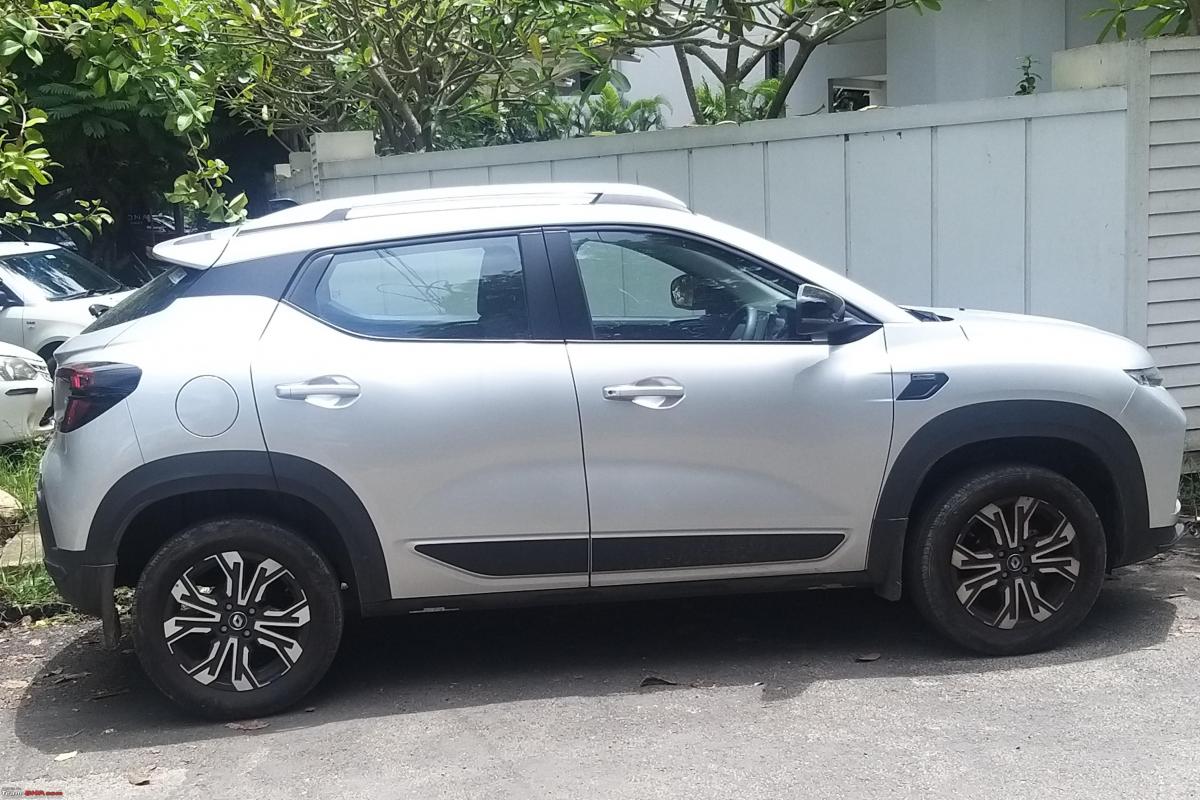

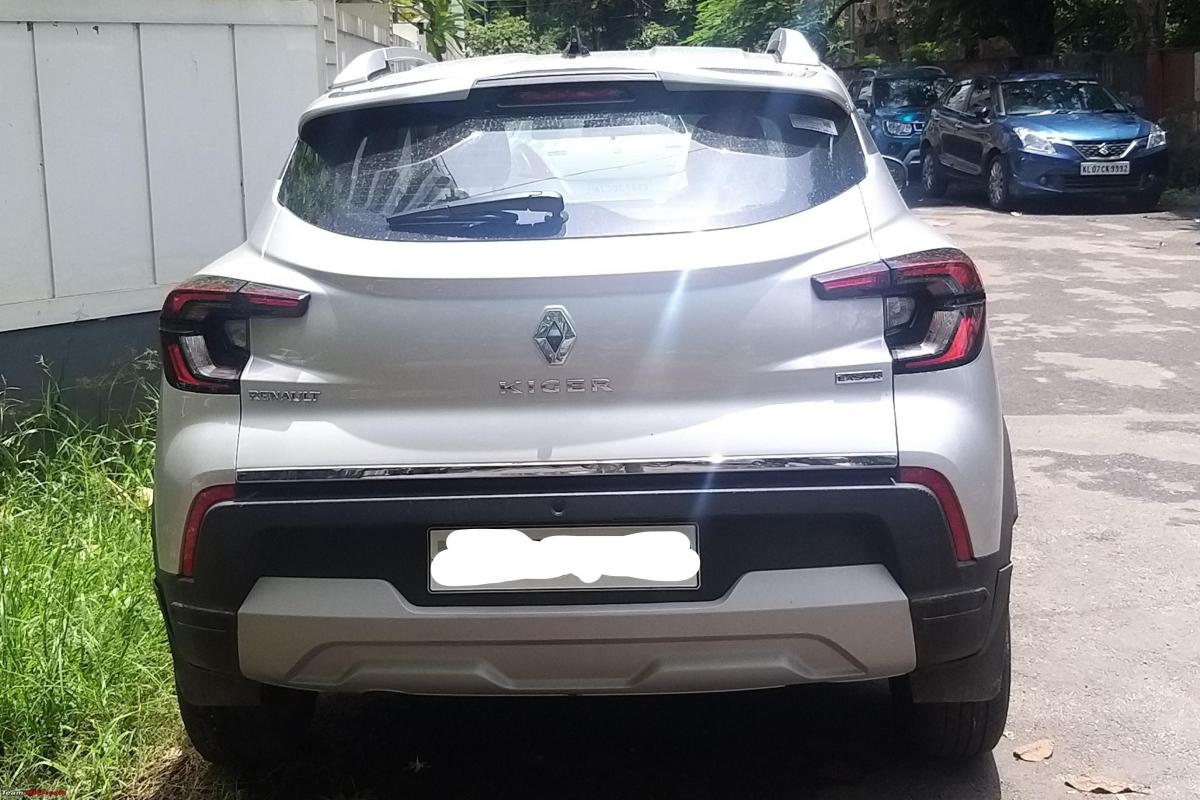


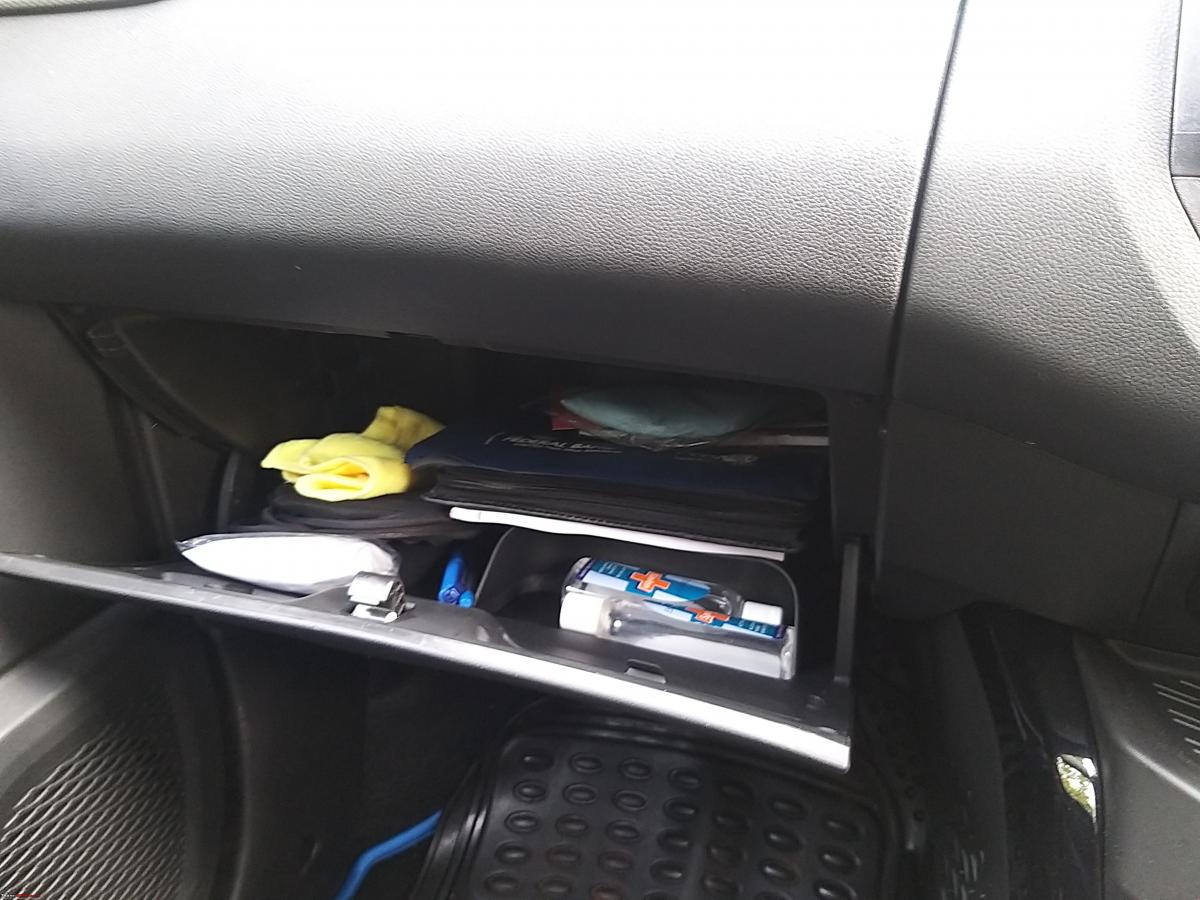


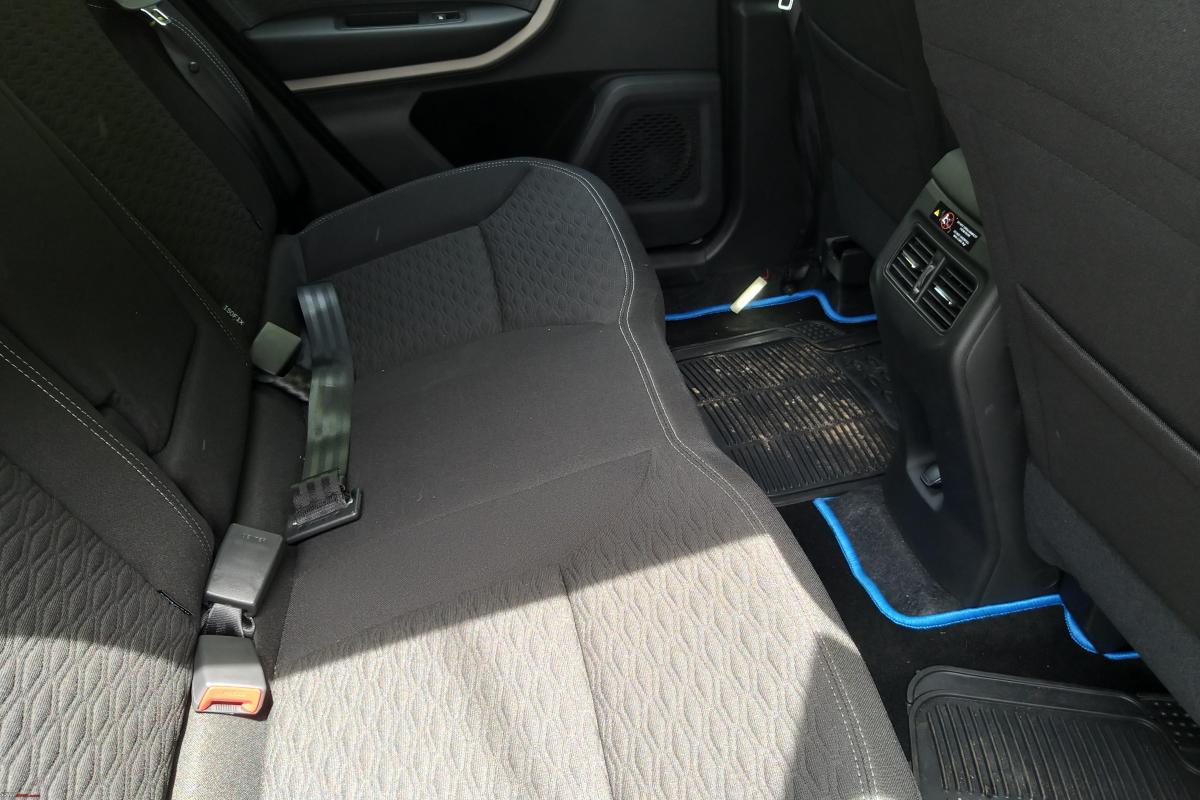
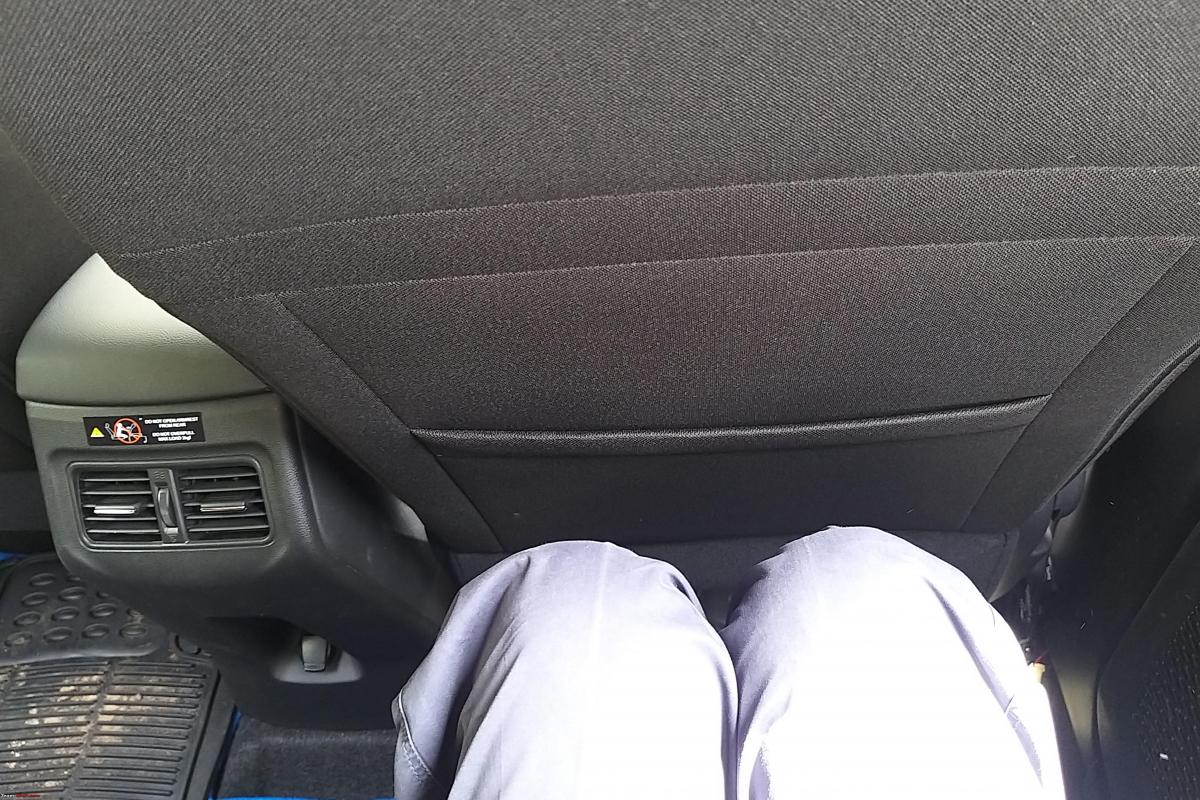
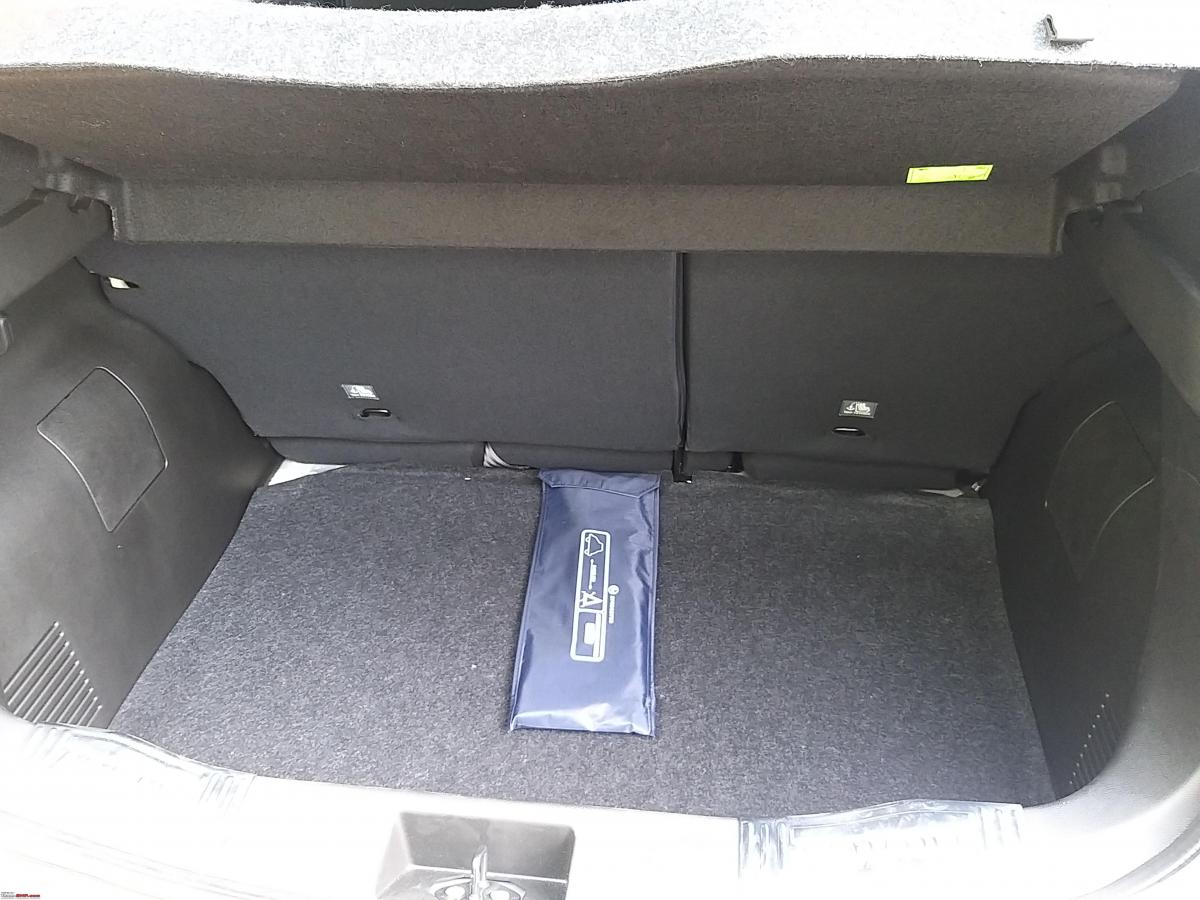
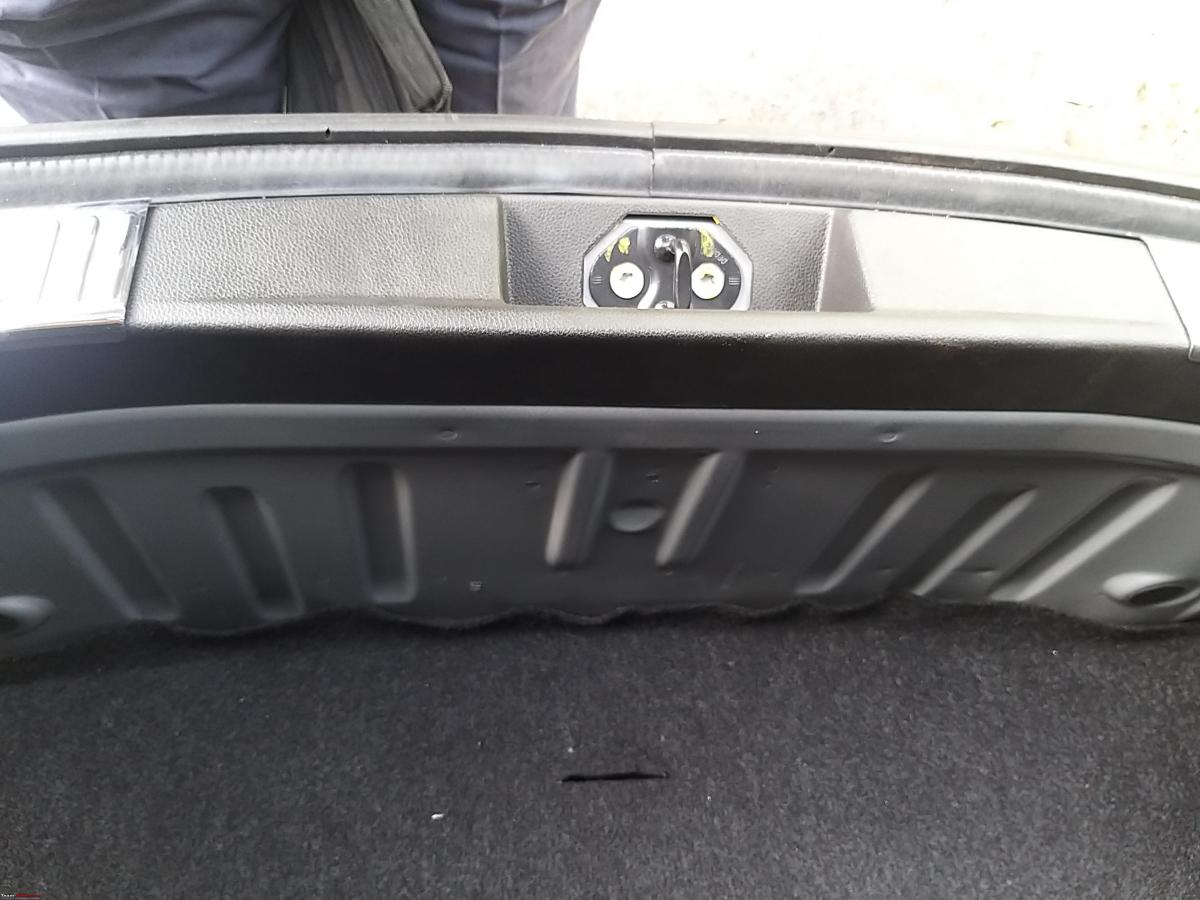
Check out BHPian comments for more insights and information.
- Tags:
- Indian
- Kiger
- Review
- Car ownership
News
Renault Kiger RXT (O) variant launched; bookings open Aug 6
The RxT Option variant will cost Rs. 35,000 more than the regular RxT variant.
The Renault Kiger comes in four variants - RxE, RxL, RxT and RxZ. Now, the carmaker has added an 'RxT Option' trim to the line-up as part of its 10th anniversary celebrations. Renault dealerships will start taking bookings for the RxT Option variant from August 6 onwards.
The RxT Option trim comes equipped with LED headlights, diamond-cut alloy wheels, wireless smartphone replication and a PM 2.5 filter.
The Kiger RxT Option is available with a single engine option, in the form of a 1.0-litre naturally aspirated petrol unit producing 71 BHP and 96 Nm. It will be paired with either a 5-speed manual or 5-speed AMT.
The Kiger is also available with a 1.0-litre turbo-petrol engine, which makes 99 BHP and 160 Nm. It is available with the option of a 5-speed CVT.
As part of the celebrations, Renault has announced the ‘Freedom Carnival’ from August 6-15 across India, except Maharashtra, Gujarat, Goa and Kerala. For these states, specific offers with maximum benefits of up to Rs. 90,000 have been launched.
Under the ‘Freedom Carnival’, Renault is offering additional benefits to those customers booking the cars during this 10-day offer period.
News
Renault Kiger's car battery dies 2 days after taking delivery
I hugely suspect a fault with the wiring harness or with the alternator of the car. But, as per the service centre, they have checked it all & found no issues.
BHPian redbaron91 recently shared this with other enthusiasts.
My parents took delivery of the Renault Kiger RXZ CVT, on 31 May, 2021.
Delivery was delayed by almost 12 days, due to lockdown situations.
Price details: Rs 9,78,500 (ex-showroom)
OTR (Kerala): Rs 11,08,784 (excluding insurance & additional accessories)


Since I stay in a different city, I am yet to get behind the wheel.
2 days after the delivery, an issue with the battery cropped up. The battery was dead and the car was unable to start.
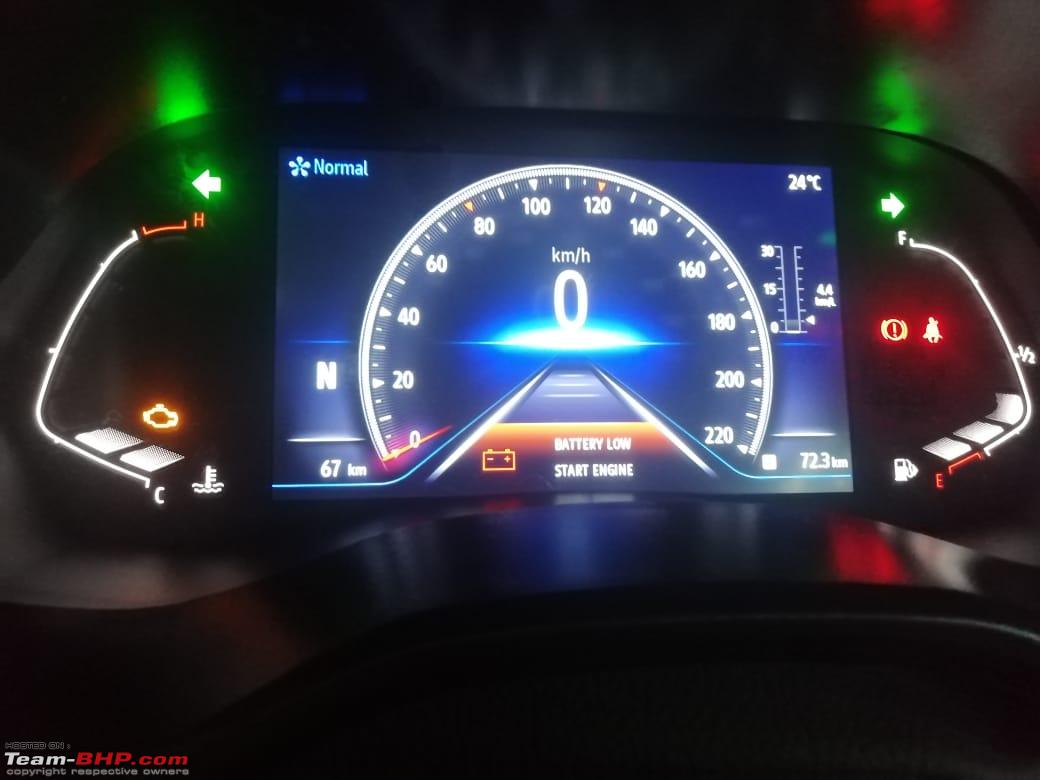
On top of it, the CVT gear-shifter got stuck at "P" mode. With some online research, I found that shift locker will be enabled during battery failure and one must be manually disabled.

There is a small flap with "Shift Lock" mentioned next to the gear lever. One has to remove the flap using a flat-headed screwdriver, press and hold the button inside it, while simultaneously pressing the brake pedal & gear switch on the lever to move to "N" mode.
The battery issue continued to occur almost every day since then. RSA from Renault jump-started the car 2 times & charged it for a while. For the last 2 weeks, the car is being switched ON for at least 30 minutes & it has clocked around 40-50 km in total. Unable to clock more miles (on daily basis) due to ongoing lockdown situation in Kerala.

I informed this issue at the showroom and escalated it to the RIPL region team leader, via email & phone calls. They have not been able to check the car till date, due to the closure of their service centre.
They are have agreed to take the vehicle to the service centre, once they are allowed to operate by the govt.
It is very annoying & frustrating to have such an issue with a brand new car. I highly suspect some issue with the battery or with the alternator or electrical leakage from a component or wiring harness.
Can anyone throw some light on "How can a service centre technician diagnose such issues with the battery?" Can anything be found using OBD scanners?
Update:
The miserable ordeal with the Renault Kiger CVT continues. The Renault service centre was not able to find the root cause for the battery drain.
I hugely suspect a fault with wiring harness or with the alternator of the car. But, as per service centre they have checked it all & found no issues.
As per the TVS Renault dealership, the installation of the front parking sensor by their technician is causing the battery drain and that has led to the damage of the wiring harness in the dashboard.
Renault official even tried to pin the blame on me, saying why a non-genuine spare part (front parking sensor) was installed in the car. They were quick to retract the statement, when I conveyed the work was done at dealer end, as they showed it as an accessory, while selling the car.
I am yet to receive more details from them regarding the damage of the wiring harness
Few things that worry me here is:
- How the installation of a front parking sensor, damages the entire dashboard wiring harness?
- Is it advisable to replace the entire wiring harness, as it needs disassembling of complete front dashboard trim elements & related components? I am doubtful about fit and finish, post such critical work.

Here's what BHPian Jagann13 had to say on the matter:
I have no insights on whether the installation of front parking sensors drains a battery. But I have had a somewhat similar experience with our Triber. The issue was not draining the battery, but installation of ambient lighting made a relay go kaput and so did the wiring harness.
While, I completely suggest you to get the harness replaced, make it clear that they fit your dash as well as it is now. In my case, after they worked on the dashboard, it was quite clear that the fit wasn't good and had rattles. So, we had to push them to do it again to make it as good as a factory finish.
Here's what BHPian abhishek46 had to say on the matter:
Devices like the front parking sensors use a very tiny amount of power (typically 60mA, 12V i.e. 0.7watt).
It will take a significant 360hours (15days) for a 0.7 watt device to drain a 36Ah automotive battery.
Something doesn't add up.
Here's what BHPian a4anurag had to say on the matter:
If you have the car in your possession, I'll suggest you to get a digital multi-meter and check for parasitic draw.
Here's a thread from vigsom on how to check for the same.
Other than that, I am sure the parking sensors would have some kind of coupler or power source used i.e. from the battery, check the voltage that circuit draws and state of battery with that circuit disconnected.
Check out BHPian comments for more insights and information.
Pages



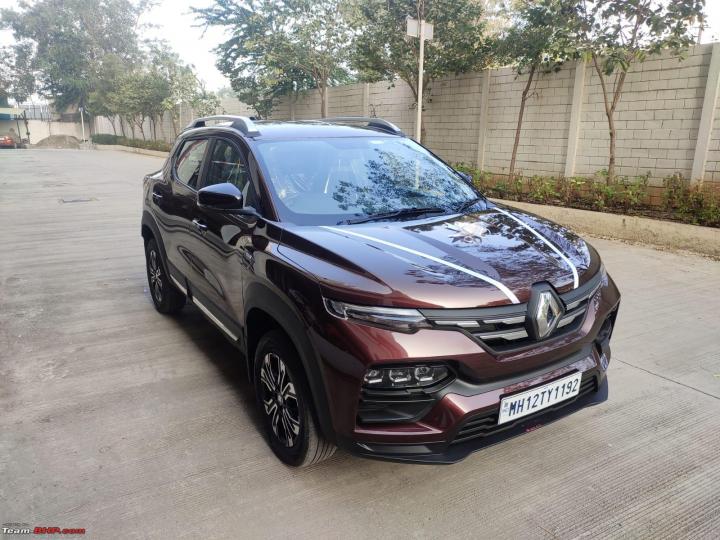

_0.jpg)
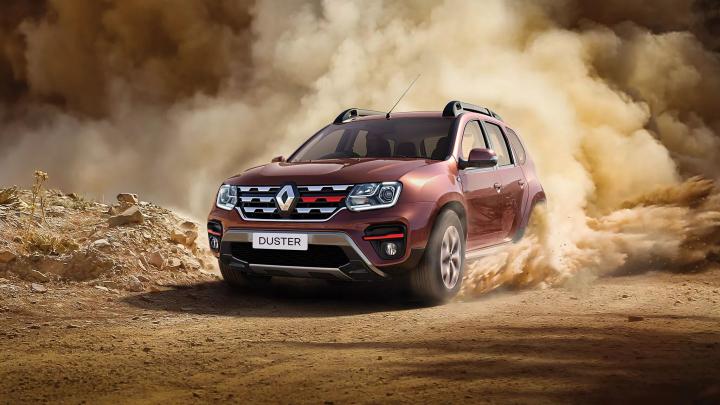
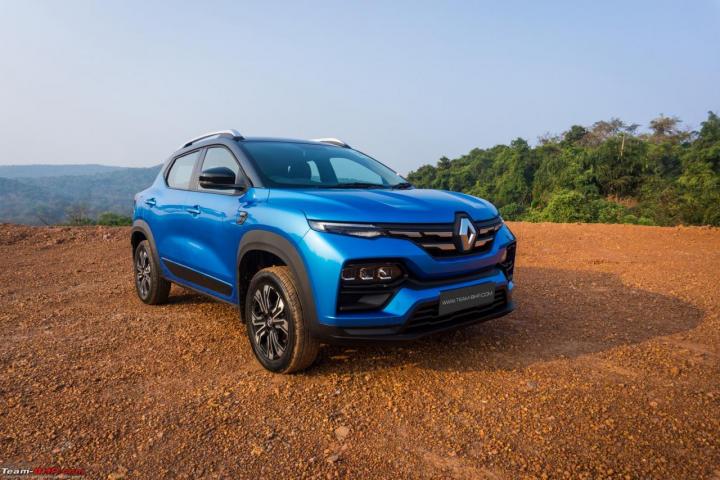
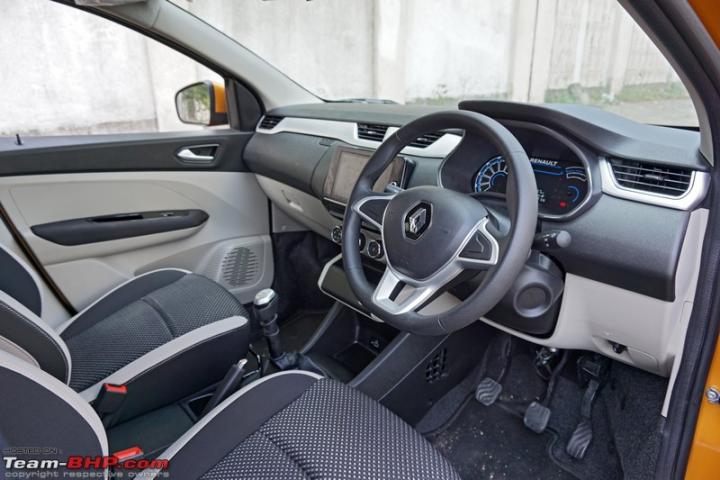

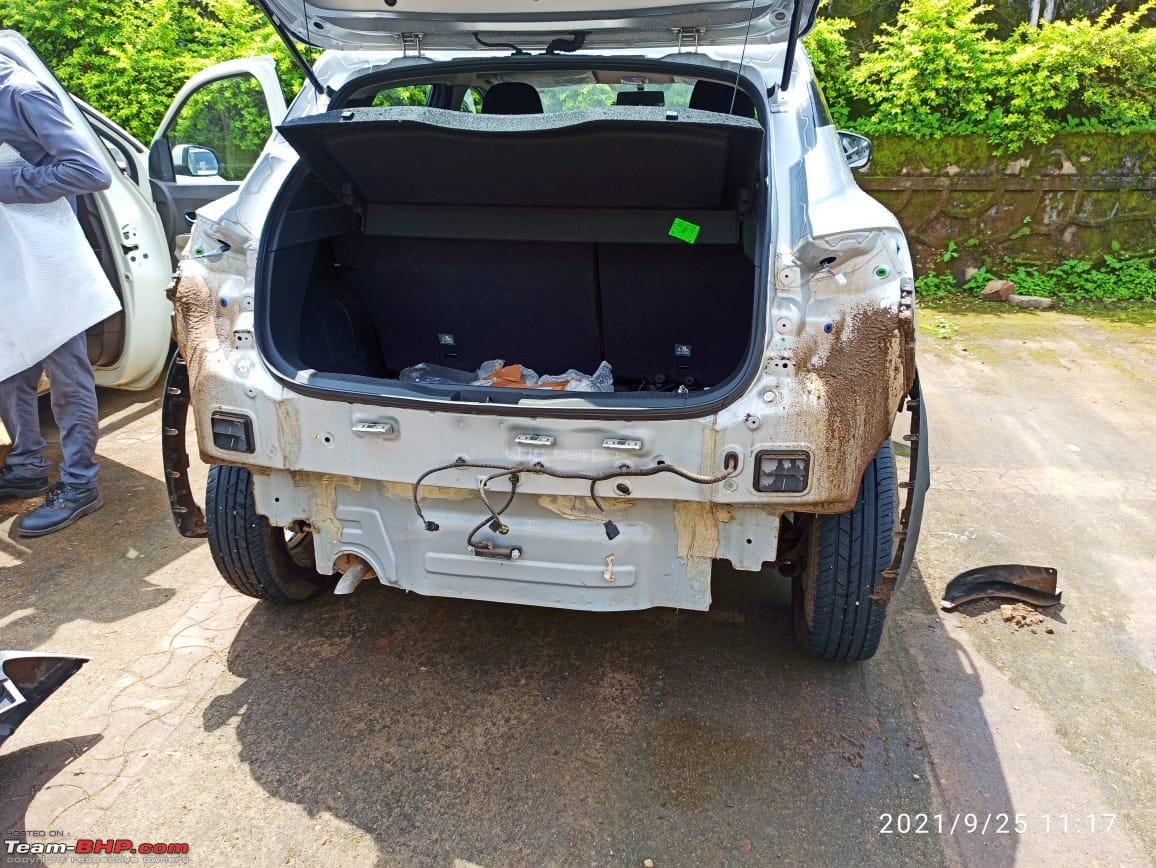
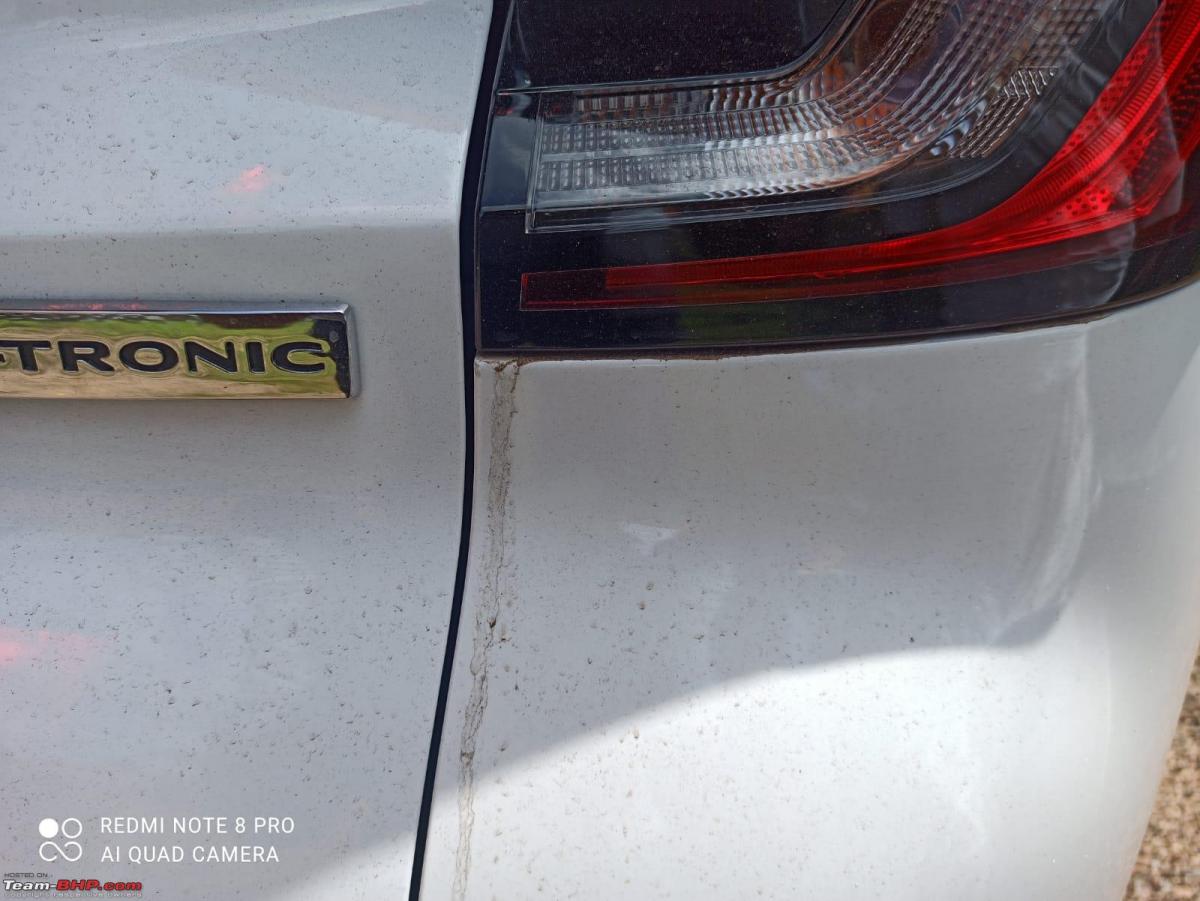


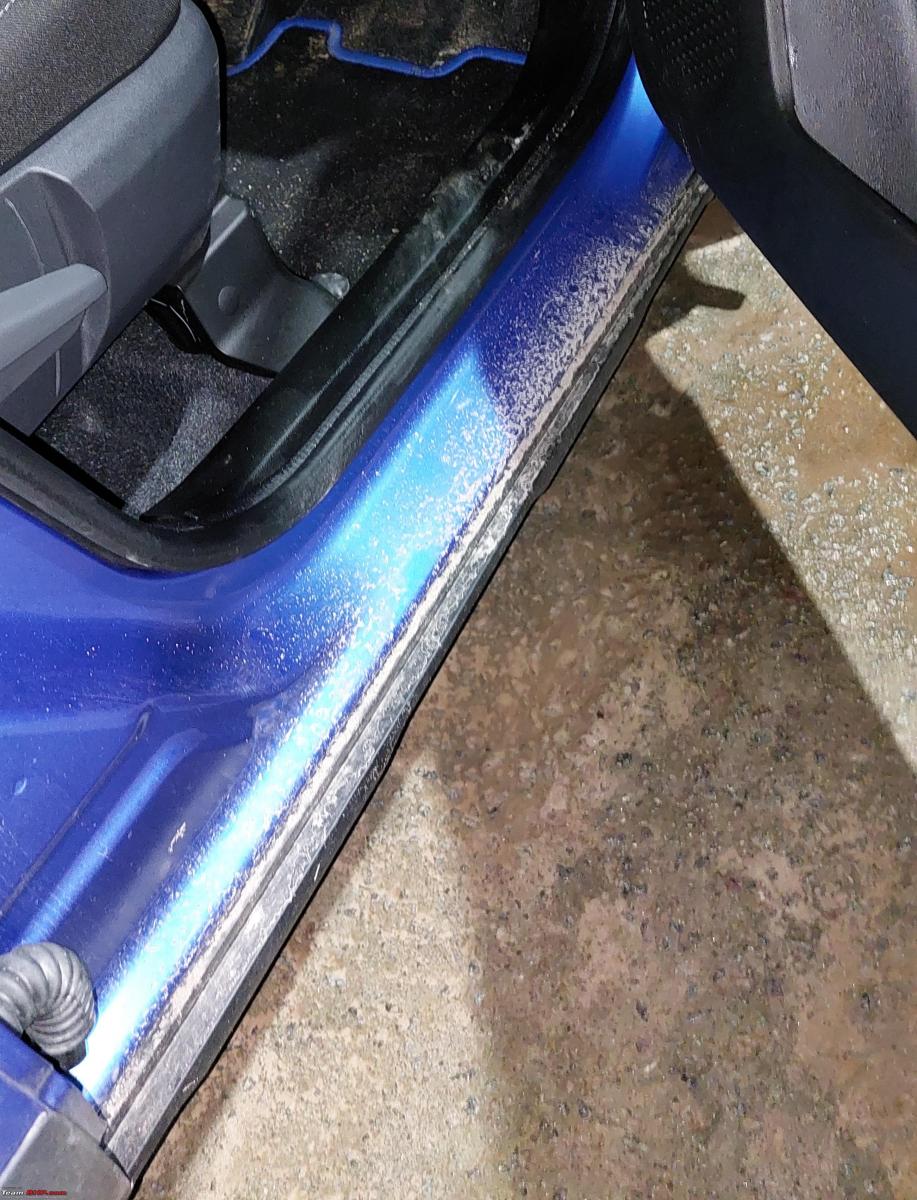
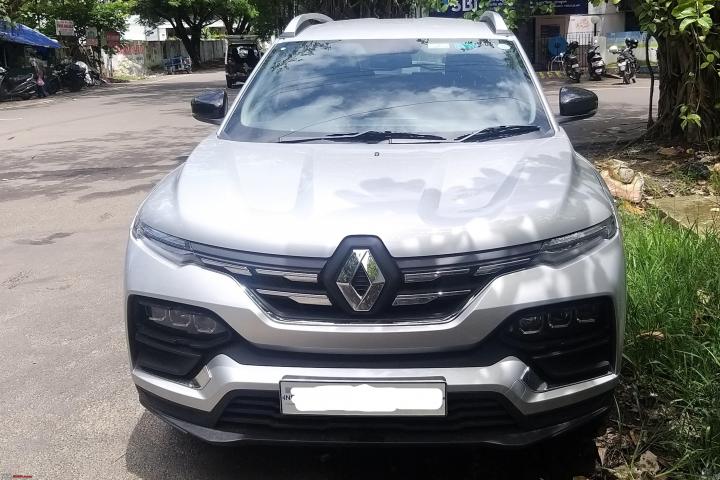
_0.jpg)

